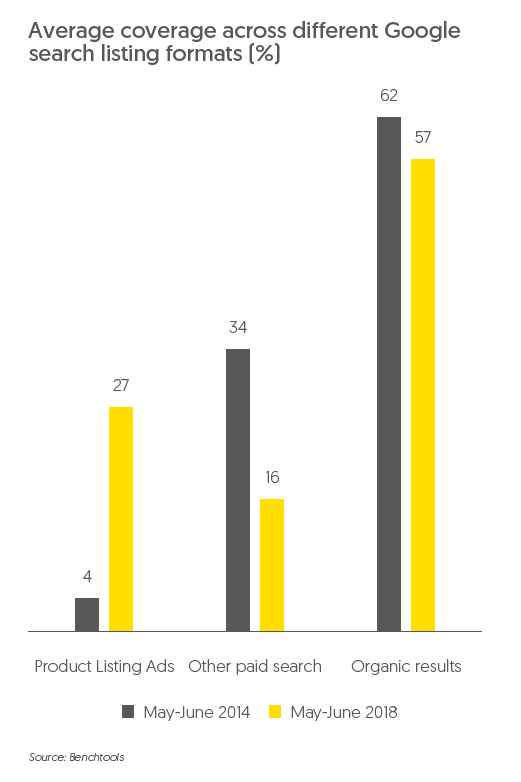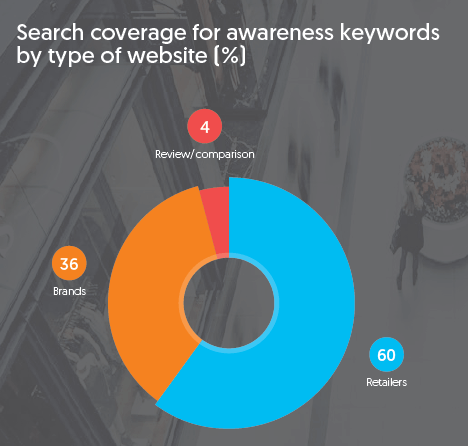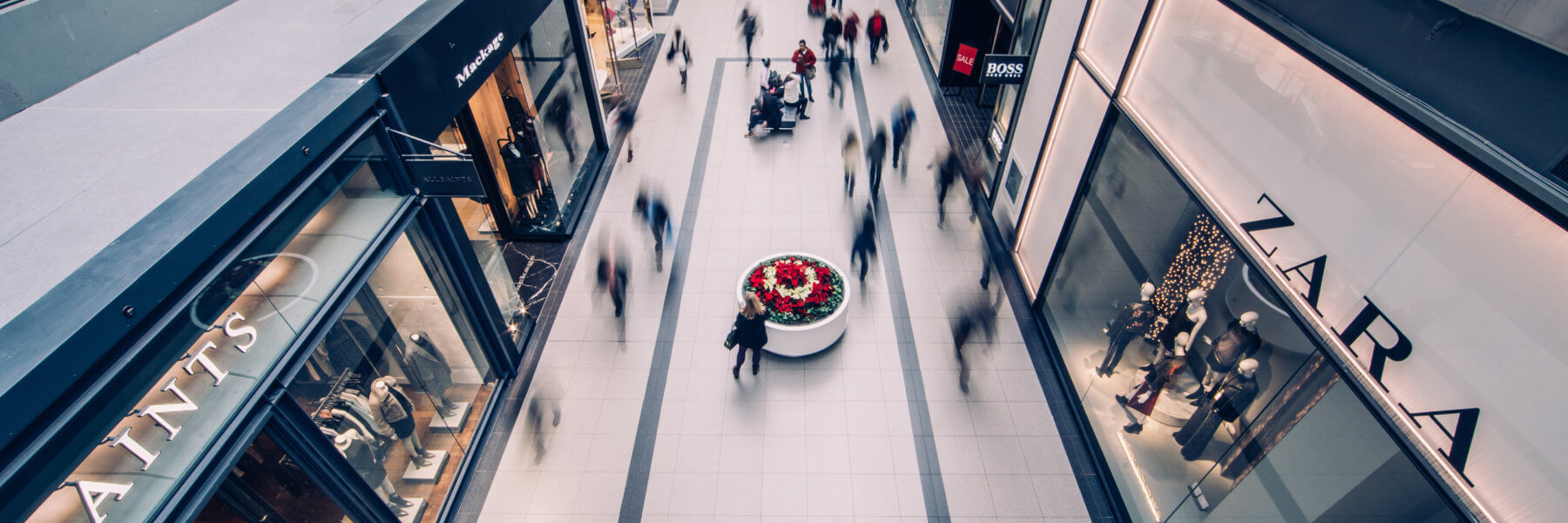Retailers are making greater use of search than ever, using powerful shopping listings to drive sales directly, but also to focus on capturing customers in the awareness phase. Snapchat’s new partnership with Amazon allows it to turn physical encounters with products into online sales.
Global search marketing spend is decelerating but still growing healthily. Search is a behavioural-insights goldmine for brands: the language that consumers use in their search queries indicates where they are in the purchase journey. Brands are harnessing these insights, driving more investment in the channel to align search experiences with consumer intent.
The search results page is becoming a market- place
Search is becoming more integrated with commerce. Shopping listings used to be a minor format in search results but are becoming ever more common. These listings – such as Product Listings Ads on Google – are paid search ads that refer to a particular product, and include a product image, price and link to the product on the retailer’s website. They are a powerful tool for driving traffic and sales to e-commerce platforms.
Our research shows that Product Listing Ads are becoming much more prominent in Google’s search results.
Benchtools, our proprietary search monitoring tool, shows that Product Listing ads took up 27% of the typical search results page on Google UK in May-June 2018, up from just 4% in May-June 2014. Most of this coverage was taken from other paid search results, but some came from the organic search results, which have become less prominent over time.


Retailers embrace search as an awareness driver, in addition to a purchase driver
Brands use search to engage people through the entire purchase funnel: from awareness, to consideration, to purchase. Many retailers, though, have traditionally used search marketing as a direct-response channel, focused only on purchase. Now, however, retailers are beginning
to support the notion that searches in the awareness stage can, and do, lead to purchase. Using Benchtools, we recently monitored paid and organic listings around keywords related to running shoes. We noticed that for “awareness” search terms, retailers accounted for 60% of
overall paid and organic coverage on the search results page.

Snapchat partners with Amazon to launch visual search
In September, Snapchat announced a new visual search product in partnership with Amazon. The product allows a user to hold up their Snapchat camera, point at a physical product or barcode, then press and hold on the camera screen. Once the item or barcode is recognised, an Amazon card appears onscreen, giving the user the ability to shop that or similar products.
The new product, combined with the scale of Amazon, offers Snapchat the ability to compete with both Instagram and Pinterest in the growing
social commerce market. There’s a big benefit to Amazon here, as well. Amazon has tried to launch social networks or standalone apps in the past, but none have been able to compete with the pure-play social giants. Launching a standalone visual search tool would be challenging both to build and to market for Amazon.
In categories with younger customers who have strong online-shopping habits, this could pose a significant competitive advantage for Amazon. Snapchat’s visual search tool can also make showrooming even easier–turning physical retail environments into seamless opportunities to Snap favourite products, browse and ultimately purchase on Amazon.





